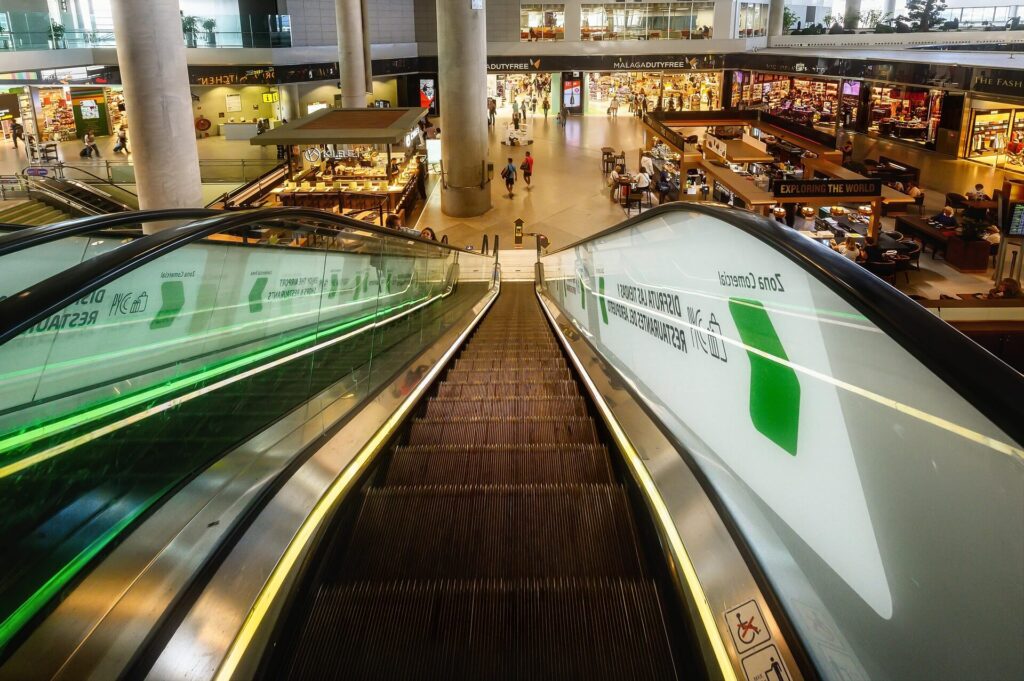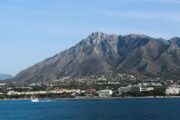The Joy of Movement on the Costa del Sol
Stretching along the sun-drenched southern coastline of Spain, the Costa del Sol is one of Europe’s most desirable travel destinations. With more than 150 kilometers of Mediterranean beauty, it encompasses vibrant cities, charming whitewashed villages, and luxurious beach resorts — all connected by a sophisticated network of roads, trains, and public transportation. Getting around the Costa del Sol is not just a matter of logistics but part of the experience itself. Whether you’re cruising along the coastal highways, hopping on a train between Málaga and Fuengirola, or exploring mountain towns by bus, transportation here reflects the region’s blend of beauty, and Andalusian charm, but not its efficiency.
For travelers, understanding how to move from one place to another is key to making the most of every moment on this coastline. This guide will help you navigate every option available — from public transport to taxis, rental cars, and scenic drives — so you can explore the Costa del Sol with confidence and ease.

Starting Point: Málaga, the Heart of the Costa del Sol
Every journey along the Costa del Sol begins — or passes through — Málaga, the region’s beating heart. As the capital of the province and the main transportation hub, Málaga connects the entire coastline with the rest of Spain and Europe. Its airport, train station, and port make it one of the most accessible destinations in southern Spain.
Málaga-Costa del Sol Airport (AGP) is located just eight kilometers southwest of the city center and serves as the main gateway for both national and international visitors. With direct connections to major cities across Europe and beyond, it welcomes millions of travelers each year. From the airport, getting into Málaga or heading toward coastal towns is quite simple — with trains, buses, taxis, and private transfers operating daily.
The María Zambrano train station is another key point of connection. Serving as the terminus for high-speed AVE trains from Madrid, Barcelona, and Seville, it’s a modern and efficient facility that makes long-distance travel easy. Once in Málaga, visitors can transfer seamlessly to the local Cercanías commuter rail, which runs along the coast to nearby towns such as Torremolinos, Benalmádena, and up to Fuengirola.
Exploring by Train: The Coastal Cercanías Line
For many visitors, the Cercanías train is the easiest and most convenient way to explore the western Costa del Sol. Operated by Renfe, Spain’s national railway company, the C-1 line connects Málaga city center with the airport, Torremolinos, Benalmádena, and Fuengirola.
The journey from Málaga to Fuengirola takes about 45 minutes, with frequent departures every 20 minutes throughout the day. The trains are clean, air-conditioned, and punctual, offering scenic views of the coastline as they pass through resort towns and beach neighborhoods. Stations are conveniently located near major attractions — for example, in Torremolinos, the station sits right by Calle San Miguel, the town’s main shopping street, while in Benalmádena, it’s a short walk to the beach and marina.
For those based in Málaga, the Cercanías is an ideal way to enjoy day trips without worrying about parking or traffic. It’s especially popular among visitors staying in the smaller coastal towns, allowing them to reach Málaga’s museums, restaurants, and historic sites without renting a car. Tickets are affordable, available from vending machines at every station, and can even be paid for with contactless cards.
Buses: Reaching Every Corner of the Coast
While the train covers the western stretch of the Costa del Sol up to Fuengirola, buses reach the places the rail network does not — particularly the eastern coastline and the interior villages. The ALSA and Avanza bus companies operate extensive routes that connect major towns like Marbella, Estepona, and Nerja with Málaga and beyond.
The Málaga Bus Station, located next to the train station, serves as the central hub. From here, you can catch frequent buses westward to Marbella (about 1 hour and 15 minutes), Estepona (2 hours), or eastward to Torre del Mar and Nerja (around 1 hour 30 minutes). Long-distance routes also connect the Costa del Sol to Granada, Seville, and even Portugal.
Local buses are another essential mode of transport, especially for short trips within towns or between nearby communities. In Málaga, the municipal bus network (operated by EMT) is efficient and inexpensive, covering the entire city, including the historic center, port, and beach areas. Coastal towns like Fuengirola, Torremolinos, and Estepona also operate their own local lines.
Buses are particularly useful for reaching the charming inland “pueblos blancos” (white villages) such as Mijas Pueblo and Frigiliana, where narrow roads and limited parking make driving less convenient. While the timetables may require some planning, the routes are scenic, winding through mountains, olive groves, and valleys — offering travelers a glimpse of rural Andalusia.

Driving Along the Coast: Freedom on Four Wheels
For those who prefer independence and flexibility, renting a car is one of the best ways to explore the Costa del Sol. The region’s road network is modern and well-maintained, and driving conditions are generally good.
The main coastal highway, the A-7 (Autovía del Mediterráneo), stretches the entire length of the coast, connecting all the major resorts from Nerja in the east to Estepona and beyond in the west. Running parallel to the A-7 is the AP-7, a toll road offering faster travel times and less traffic — ideal for longer trips or travelers heading toward Cádiz or Granada, but at times expensive.
A car gives you the freedom to venture off the beaten path. You can drive inland to the mountain town of Ronda, famous for its dramatic gorge and historic architecture, or head into the Axarquía region, where villages like Cómpeta and Canillas de Aceituno offer traditional Andalusian life. Parking is generally easier outside major cities, though in Málaga or Marbella’s old town, it’s advisable to use paid parking garages to avoid narrow streets and fines.
Petrol stations, known as “gasolineras,” are plentiful, and signage follows international standards. Spain’s highways are safe, with strict speed limits (usually 120 km/h on motorways, 90 km/h on rural roads, and 50 km/h in towns). For visitors from abroad, it’s important to carry a valid driver’s license, insurance, and vehicle documents at all times.
Taxis and Ridesharing Services
If you prefer not to drive, taxis are readily available across the Costa del Sol. In Málaga and most coastal towns, you’ll find official white taxis with a green light when available. Prices are regulated, with meters starting at a base fare and increasing according to distance and time.
Taxis are an excellent option for short distances or when traveling with luggage, such as airport transfers. A ride from Málaga Airport to Marbella typically costs between €70 and €90, while trips within Málaga city range from €6 to €15 depending on distance. For longer journeys, it’s advisable to confirm an estimated fare in advance or ask for a fixed price.
Ridesharing apps like Uber, Bolt, and Cabify also operate in parts of the Costa del Sol, particularly in Málaga, Torremolinos, and Marbella. They offer transparent pricing and easy booking through mobile apps, which can be especially convenient for travelers without local currency. However, availability may be limited in smaller towns or during peak holiday periods.
Bicycles and Electric Scooters: Urban Mobility Made Easy
In recent years, the Costa del Sol has embraced eco-friendly transport options, with more cycling paths and electric scooters available throughout the region. Cities like Málaga, Fuengirola, and Marbella have developed extensive bike lanes, making it easy to get around on two wheels.
Málaga’s public bike-sharing system, known as MálagaBici, allows users to rent bicycles for short rides across the city. Registration is simple, and bikes can be picked up and returned at docking stations near major attractions. Similarly, private rental companies offer bicycles, e-bikes, and scooters for tourists wanting to explore at their own pace.
Electric scooters, available through companies like Lime and Tier, are becoming increasingly popular for quick trips within cities. They can be rented through smartphone apps and are ideal for short-distance travel — like cruising along Málaga’s promenade or from the beach to the city center. Helmets are recommended, and scooters are restricted to bike lanes and designated paths.
Walking: The Best Way to Experience Local Life
Despite all the transportation options, one of the most rewarding ways to explore the Costa del Sol is on foot. Many of its towns, especially the older ones, are designed for pedestrians. Strolling through Málaga’s historic center, wandering the cobblestone streets of Mijas Pueblo, or walking along the Senda Litoral, a coastal path connecting stretches of the coastline, allows travelers to experience the true atmosphere of the region.
In Marbella, the Avenida del Mar connects the charming Old Town with the beach, lined with sculptures by Salvador Dalí. In Estepona, the Paseo Marítimo offers one of the most scenic seaside walks in Andalusia, with views of the sea and the distant Rif Mountains of Morocco. Whether it’s a morning coffee walk or an evening paseo, walking remains an integral part of Andalusian culture — and the perfect complement to any transport plan.
Boat Trips and Ferries: Traveling by Sea
Transportation on the Costa del Sol isn’t limited to land. The coastline offers a variety of boat trips and ferry connections, providing both practical travel and leisure opportunities. From Málaga’s port, several companies offer excursions along the coast, dolphin-watching tours, and sunset cruises.
Marbella’s Puerto Banús and Estepona’s marina are also popular departure points for private yacht charters and sailing experiences. While there are no regular ferry lines connecting Costa del Sol towns, travelers can take advantage of seasonal routes to Morocco from nearby ports like Algeciras and Tarifa — both within a two-hour drive from Málaga. These crossings open up exciting day-trip possibilities to Tangier and beyond.
Exploring by boat offers a new perspective on the region: the glittering coastline, the Sierra Bermeja mountains rising inland, and the play of Mediterranean light that has inspired artists for centuries.
Airport Transfers and Long-Distance Connections
Private transfers and shuttle services are widely available, offering comfort and convenience for groups or families. Many hotels and resorts partner with transfer companies to provide door-to-door service, ensuring stress-free travel at the beginning and end of a trip.
For those exploring beyond Andalusia, Málaga’s María Zambrano station connects travelers to the rest of Spain via high-speed train. Madrid is just 2 hours 30 minutes away by AVE, Seville can be reached in 1 hour 55 minutes, and Barcelona in just under 6 hours. These routes make Málaga an ideal base for discovering both southern Spain and the broader Iberian Peninsula.
Tips for Getting Around Efficiently
While transportation in the Costa del Sol is straightforward, a few local insights can enhance your experience. Public transport is reliable, but schedules may vary on weekends or during holidays, so checking timetables in advance is wise. Most trains and buses now accept contactless payment, but carrying some cash can be helpful in smaller towns.
For drivers, remember that parking in city centers can be limited; using public car parks is usually the easiest option. In smaller coastal towns, free parking is often available near the beaches. Renting a car is particularly worthwhile if you plan to explore inland villages or visit multiple destinations in one trip.
If you prefer public transport, consider combining the Cercanías train for coastal travel with local buses for inland excursions. This approach reduces stress and allows you to enjoy the views rather than focus on the road.














